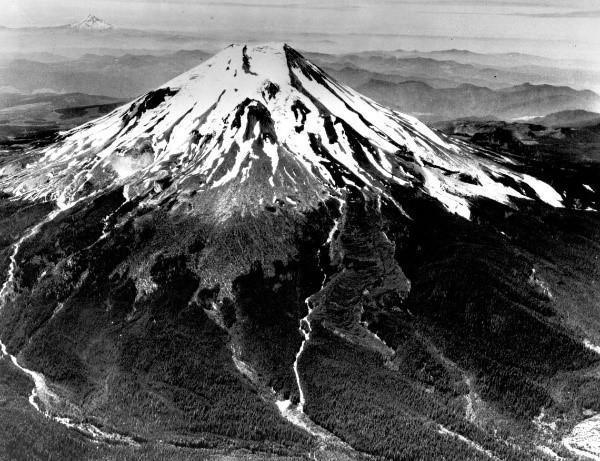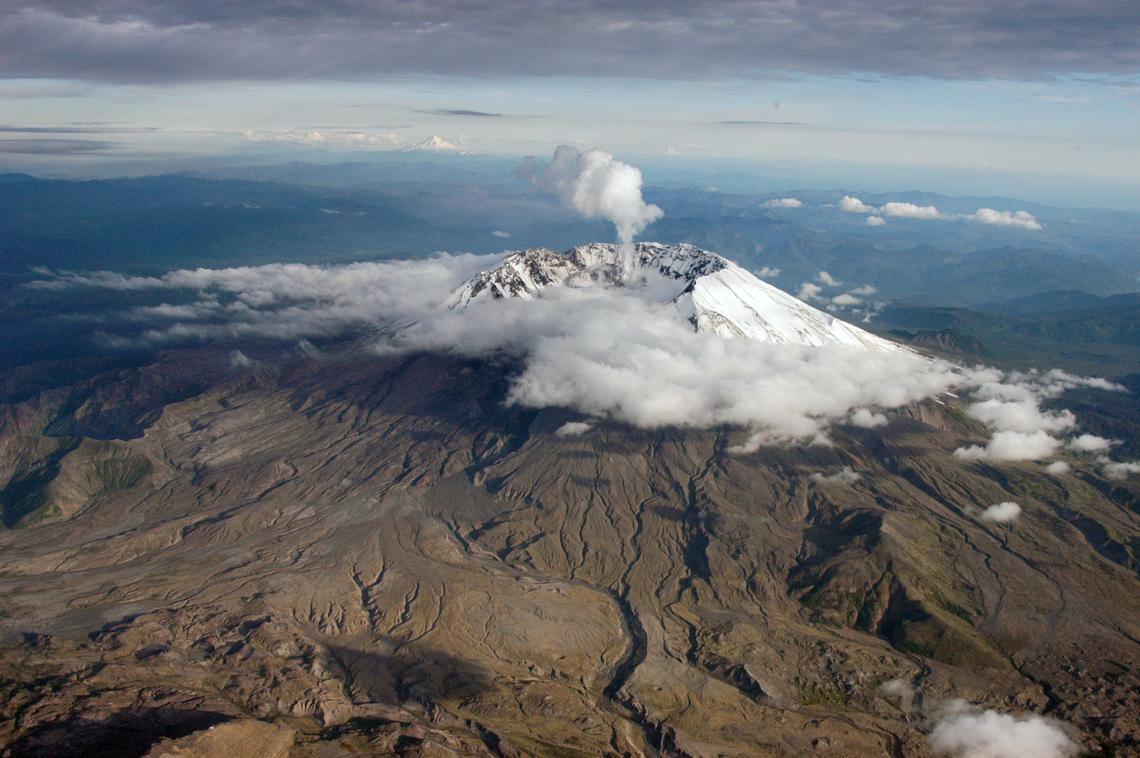Introduction
Volcanic eruptions occur when lava and gas are emitted from the volcanic vent. The most common effects of this explosion are population displacement when masses of people are sometimes forced to escape the flood of flowing lava. Volcanic explosions also lead to temporary food scarcity and frequent volcanic ash landslides known as Lahar.
The most hazardous form of volcanic eruption is referred to as ‘glowing avalanche.’ This occurs because the exploded mixture of volcanic hot liquefied rock and gas contents which has temperatures ranging from one thousand two hundred degrees is formed (Contributor, 2929). The overflowing fusion is formed mainly from pieces of rocks that melt as a result of high temperatures.
The discharge flows down the perimeter of the volcano at a high speed of about 100 kilometers per hour and they can cover an area of about 10 km or even to 40 km from where they originated from (Contributor, 2929). This paper will concentrate on the eruption of the Mount St. Helens volcano, looking at its history, the explosion, the immediate consequences of the eruption, and the historic impact on the climate and human life.
Background
Mount St. Helens Before the 1980 Eruptions
(Pre-1980 Mount St. Helens with a view of Mt. Hood to the left., 2020) Mount St. Helens is a volcanic mountain situated in the state of Southwest Washington. It is the Cascade Range’s most active volcano, a mountainous region that ranges from British Columbia to northern California, across Washington and Oregon. Mount St. Helens has alternated between intervals of volcanic explosions and prolonged periods of relative calm for many years. It is an active stratovolcano and is 2,539 m (8,330 ft.) above sea level in height, and it is a dacite volcano (Contributor, 2020). Dacite is a type of igneous rock with a middle to high silica concentration of the source lava/magma, which is flammable and explosive when it explodes on the surface.

As a part of the Cascade Mountains, St. Helens and its corresponding volcano are the culmination of the volcanic activity of the Juan de Fuca Plate under the North American Plate. The molten rocks of the collapsing Juan de Fuca Plate fuel the magma channels of the volcanoes in the Cascade Range, including that of the Mountain. It is suspected that the volcano was created from four eruptive phases, beginning 275,000 years ago (Contributor, 2020). It is the most active volcano in the Cascade during the Holocene period.
Eruption
Mount St. Helens After the 1980 Eruption
At the beginning of the 1980s, magma began pouring into Mt. St. Helens, prompting the volcano to protrude. The magma protrusion continued to develop until it became fragile, and the bulge and part of the summit collapsed into a debris avalanche. The pressure that had been building was released during an eruption which included small quantities of andesite/dacite magma. Not long after the explosion, there was a massive Plinian eruption of ash and tephra.
Many minor earthquakes occurred prior to the outburst of ash in March 1980, when some of the volcano’s pressure was released. It continued to have minor eruptions until the main one of May 1980. This major activity resulted in a massive mushroom cloud of ash depositing 520 million tons of ash over 22,000 square miles. The eruption reached 1,300 feet from the bottom of the volcano and destroyed the surrounding landscape (Usgs.gov., 2020). The massive emission of ash resulted in the emergence of lahar in rivers near the volcano.

Lahars are mudflows that are composed of alluvial deposits and water mud. They typically occur with glaciers on or around volcanoes. They can happen with volcanic activity, melting glaciers rapidly due to the heat of the outburst. They are some of the most dangerous volcanic hazards and are able to fly 40-50 miles per hour (Contributor, 2020). Lahars triggered by the 1980 explosion of Mt. St. Helen damaged 185 kilometers of road and 200 residences (Contributor, 2929). Events such as this have happened previously in this region and will occur in the future. It was in the year 2005 when Mt. St. Helens last erupted.
Pyroclastic Flows
Pyroclastic flows produce a high-density mixture of hot lava blocks, pumice, ash, and molten gas. They pass at an extremely high speed down the volcanic slopes, and along the valleys. Well before St. Helen exploded, pyroclastic flows rose from the top of the volcano, releasing a mixture of hot sedimentary rocks and gasses created by the dark fiery clouds. According to scientific discoveries, anyone close to the Pyroclastic explosion would have died immediately from the high temperatures of lava, ash, pumice, and gas, which could be up to 1300*F (Contributor, 2020). The flow is what killed all forms of life below the mountain’s surroundings. This helped pave the way for a completely new environment following the eruption of St. Helen.
Immediate Effects of the Eruption
The eruption caused tremendous damage to both property and humanity. A total of 57 individuals were killed and over 200 homes were burned (Contributor, 2020). Victims died from the inhalation of hot volcanic ash by asphyxiation, and others from thermal exposure and other injuries (Contributor, 2020). Lateral blasts, rubble tidal waves, mudflows, and floods caused extensive destruction to the land and civil works. All houses and related man-made constructions in the immediate area of Spirit Lake were submerged. The cloud of smoke and gas managed to reach 15 miles into the atmosphere, leaving the ash in a dozen regions.
The transport infrastructure was seriously affected by the devastation and destruction of more than 185 miles of rail and highways, and the drainage networks were clogged with ash throughout the Northwest. Damage to farmland, civil infrastructure, and timber was projected at $1.1 billion. The U.S. government allocated $950 million in emergency funds to assist with restoration and rehabilitation, which took ten weeks to finish the clearance of ash in the areas affected (Contributor, 2020). Until now, the territory all around the volcano is still rebounding from the impacts.
Historical Impacts
The planet had little pre-eruption knowledge prior to the St. Helen catastrophe. There was no way of determining volcanic disturbances. All this, though, changed in the wake of St. Helen’s. During the eruption disturbance gradients involved avalanches, mudflows, lateral blasts, tephra fall, and pyroclastic flow. This has offered scientists a tremendous amount of study and analysis. While the St. Helens eruption was devastating, it helped make scientific and ecological advancement possible. Brand plants and other different species started to grow and flourish in a brand-new environmental setting which was never possible previously (Contributor, 2020). Owing to this the scientific world was able to make progress like never before. In the area of natural disaster science, society has started to gain more awareness.
Conclusion
Initially, the eruption of Mount Saint Helen Volcano was thought to be an earthquake, but later on, turned into one of the most destructive and devastating volcanic activities not only in the U.S. but worldwide as well. The explosion of the Mt. St. Helens Volcano would forever affect the world’s understanding of how to assess future seismic events and to assist in the safety of the population living near or in those hazardous areas. Throughout the years, slight volcanic activities continue to follow. Many experiences from this specific incident have been realized, enabling the U.S. government, as well as other nations, to take early precautions in anticipation of such catastrophic events.
References
Contributor, M., (2020). Mount St. Helens Eruption: Facts & Information. LiveScience. Web.
Usgs.gov. (2020). Post-1980 Mount St. Helens with View of Mt Hood to the Left. [online] Web.